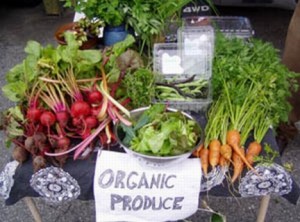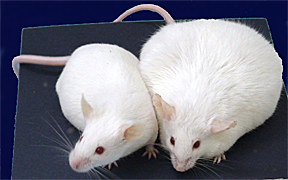Filed under: General Health, Nutrition, Recipes
This is a recipe I concocted on the fly not too long ago. With the vanilla almond milk and protein, the coconut and the pineapple it has a slight ring of pina colada to it, and the touch of mango and strawberry really thickens the shake and gives it a slightly sweet flavor and meatier texture. It is absolutely delicious. The chia seeds add some omega-3′s and some soluble fiber, which is especially important since this a slightly higher carb smoothie than I normally post. This would be a great smoothie to enjoy on a hot summer day. Enjoy!

Tropical Awesomeness
Nutrition Information: 450 calories, 23 g protein, 20 g fat, 45 g carbs, 8.5 g fiber
Also a quick reminder. Eric Cressey and Mike Reinold’s Optimal Shoulder Performance has been getting rave reviews. Due to a problem with their shopping cart software they are extending the introductory price of $97 until this Wednesday at midnight, EST. When it comes to shoulder health and performance, this DVD set is at the top of its class. After Wednesday at midnight the price will go up to $127, so act now.
Filed under: General Health, Nutrition
Many people wonder if it is worth buying organic produce, or if the extra price lightens your wallet without improving your health any more than conventional produce would.

Unfortunately evidence does not seem to provide a conclusive answer. Some research shows that organic produce have higher vitamin, mineral and antioxidant content. Other research shows the nutritional difference between organic produce and conventional to be insignificant. In reality there may be much more to the story than simply the nutrient content: the enormous amounts of pesticides, herbicides and fungicides conventional farmers use to keep bugs and weeds at bay.
Again some research has shown that the consumption of these chemicals in the amounts expected from daily produce consumption does not produce any harm, at least in the parameters covered in the study. Yet there is emerging research telling us a different story. Original research on the safety of these chemicals did not take into account possible weight-regulation disruption. Many of these compounds mimic hormones in our body, disrupting the endocrine system and the delicate balance of weight maintenance and self-regulation. The combination of dozens of pesticides, herbicides, fungicides, hormones, antibiotics, xenoestrogens and the countless other chemicals we encounter everyday might be playing a much greater role in this obesity epidemic than was ever previously realized.
To illustrate this point more clearly is the fact that there is growth in obesity in a segment of the population that can’t be explained by over indulgence, poor food choices or a sedentary lifestyle: infants. The Harvard School of Public Health reported that obesity in infants under six months had risen 73% since 1980.

To explain this peculiar phenomenon, recent research has focused on the possibility that chemicals present in our environment and especially prenatal exposure to those chemicals increases risk of obesity. Many of these chemicals were once or are currently deemed safe, but this new research is showing a different story.
This recent research has been done on mice and rats, with exposure to compounds like BPA (in hard plastics), organotins (in PVC pipes, fungicides and pesticides) and atrazine (a common herbicide). It was found even with very low level exposure, and without a change in calorie intake or physical activity level, that the mice or rats exposed to the chemicals were up to 20% heavier with 36% more bodyfat (depending on the chemical) than mice not exposed. The exposed mice had decreased basal metabolic rates, increased body weight, increased intra-abdominal fat and insulin resistance; a recipe for disaster.

Control vs Chemical-Exposed Mouse
Clearly the effect of some, if not all, of these compounds in our food supply is contributing in some capacity to this obesity epidemic. Not to mention that due to toxic run-off in the Mississippi River from conventional agricultural and animal production there is a dead-zone in the Gulf of Mexico that ranges from 6,000 to 8,500 square miles (about the size of New Jersey) where oceanic life can no longer be supported. The chemicals cause the gulf to be a hypoxic wasteland where only algae can proliferate, wreaking havoc on the surrounding environment, as well as the fishing industries. Even worse, this is the most well known, but only one of approximately 250 dead-zones like this around the world.
The fact of the matter is that there is still too little known about many of the chemicals used in conventional agriculture. Ones once deemed safe for human consumption are now being found to cause problems in weight-regulation, insulin sensitivity and endocrine disruption. This is why I recommend you purchase as many organic, sustainably farmed fruits, vegetables and other foodstuffs as possible. Removing these dangerous chemicals from our food supply, and from your body, might go a long way in improving health, energy and weight regulation.
Having said all that, I certainly understand as well as anyone the limits you can have on your food budget, which can make buying organic produce difficult. To help you prioritize your organic food choices, whether you are on a budget or you would simply like to know which type of produce has the highest pesticide residues-and which do not-the following guide from the Environmental Working Group will help. I recommend buying organic at least for the 12 Most Contaminated. Regardless of whether the produce was conventionally grown or organically, I also recommend you thoroughly wash before eating with a fruit and vegetable wash.
12 Most Contaminated
1. Peaches
2. Apples
3. Sweet Bell Peppers
4. Celery
5. Nectarines
6. Strawberries
7. Cherries
8. Pears
9. Grapes (Imported)
10. Spinach
11. Lettuce
12. Potatoes
12 Least Contaminated
1. Onions
2. Avocado
3. Sweet Corn (Frozen)
4. Pineapples
5. Mango
6. Asparagus
7. Sweet Peas (Frozen)
8. Kiwi Fruit
9. Bananas
10. Cabbage
11. Broccoli
12. Papaya
I didn’t even begin to cover other realms of the topic, like different types of organic, such as industrial organic. Another topic for another day.
Filed under: General Health, Nutrition, Recipes
This amazing recipe is courtesy of CP client Lisa Gussak. It combines wholesome wheatberries with some healthy fat and veggies. Wheatberries are the entire wheat kernel, minus the hull. Due to the fact that they are not really milled or processed, they have less of an impact on blood sugar and contain more fiber, vitamins and minerals.

Lisa’s Wheatberry Salad
- 1 cup hard winter wheatberries
- Redmond Real Salt
- 1 cup finely diced red onion (1 onion)
- 6 tablespoons extra virgin olive oil, divided
- 2 tablespoons balsamic vinegar
- 1/2 red bell pepper, small-diced
- 1 carrot, small-diced
- 1/2 tsp freshly ground black pepper
- 1 stalk celery, small-diced
- 1/2 cup cranberries
Instructions
Place the wheatberries and 3 cups of boiling salted water in a saucepan and cook, uncovered, over low heat for approximately 45 minutes, or until soft. Drain.
Saute the red onion in 2 tablespoons of olive oil over medium-low heat until translucent, about 5 minutes. Turn off the heat and add the remaining 1/4 cup of olive oil and the balsamic vinegar.
In a large bowl, combine the warm wheatberries, sauteed onions, celery, red bell pepper, carrot, 1/2 tsp Redmond Real Salt, and the ground pepper. Allow the salad to sit for at least 30 minutes for the wheatberries to absorb the sauce. Season to taste and serve at room temperature.
Makes 6 servings.
Enjoy!
Filed under: General Health, Nutrition
There is a school of thought out there that some foods, namely celery and cucumbers, are negative calorie foods. That is, it requires more calories to digest them than they contain. This is false. While it is true that these are incredibly healthy low calorie foods that I highly recommend, they are certainly not negative calorie foods.

The ideas put forth usually revolve around either the Thermic Effect of Food, or due to their high fiber content (and since fiber is calorie-free right) these foods require more energy to digest than they provide.
The problem with these two ideas is that the Thermic Effect of Food only makes up about 10-15% of your total energy expenditure. Carbohydrates only require about 4 calories to digest for every 100 they provide, so no matter how low-calorie the carbohydrate-based food may be, it will never take more energy to digest than it provides.
There is also the matter of fiber being calorie free. This is a common belief, unfortunately it is a false one. Soluble fiber can and will be fermented by the body to create short-chain fatty acids like butyrate, which clearly has caloric value. The actual caloric value of fiber is therefore considered to be between 1.5-2 calories per gram. This is an average, and they type of fiber makes a difference, but no food is negative calorie!

Having said all that, cucumbers and celery still provide little to no calories at all, and are an excellent food choice. An entire cucumber only provides 45 calories, 11 grams of carbs and 2 grams of fiber while providing plenty of water, some vitamin C, vitamin K, magnesium, potassium and manganese. 4 large stalks of celery will provide about 40 calories, 9 grams of carbs, 4 grams of fiber and 1 gram of protein while providing plenty of water, some vitamin A, vitamin K, folate, and potassium.
Whether they are negative calorie or not, the more fruits and vegetables you eat, the better!
Don’t forget that the sale price on Optimal Shoulder Performance won’t last long, so if you are thinking about getting it, act now!

Filed under: General Health, Nutrition
In my mind meat, eggs, and dairy products from pasture-raised animals are ideal for your health. Compared with conventional feedlot-raised animals, they offer you a much greater nutrient profile. They are richer in antioxidants and vitamins; including vitamins A, C, D, E, and K. Additionally, they do not contain traces of added hormones, antibiotics or other drugs and they do not eat grass that has been treated with herbicides and pesticides.
There are a number of nutritional differences between the meat of pasture-raised grass-fed animals and conventional feedlot-raised animals. Meat from grass-fed cattle, sheep, and bison are leaner, and can have up to one third as much fat content as a similar cut from a grain-fed animal. Not only are grass-fed pasture-raised animals leaner, the fat content of their meat is of a higher quality. Meat from grass-fed animals has two to four times more omega-3 fatty acids than meat from grain-fed animals. Omega-3 fats can reduce blood pressure, decrease LDL, decrease triglycerides, slow the growth of a wide array of cancers, regulate heartbeat, are essential for your brain, eyes and nerves, and people with diets rich in omega-3 fats are less likely to suffer from depression, schizophrenia, attention deficit disorder, or Alzheimer’s disease.

Allowing animals to graze on pasture provides higher amounts of omega-3 fats because omega-3′s are formed in green leaves and algae. Sixty percent of the fatty acids in grass are omega-3′s. Grain-fed animals are not given access to foods rich in omega-3′s, so their meat content contains little to none.
The same issue arises with hens and their eggs. Conventionally-raised chickens are housed indoors and are deprived of greens, mainly being fed corn, causing their meat and eggs to become artificially low in omega-3 fats. Eggs from pasture-raised hens can contain up to ten times more omega-3 fats than conventionally raised hens! Only 40% of Americans consume enough omega-3 fats, and 20% have blood levels so low that they cannot be detected. Switching to meat, dairy and eggs from grass-fed and pasture-raised animals is one way to increase your intake of these vitally important omega-3′s.
Another benefit of eating grass-fed pasture-raised animals is their CLA content. CLA is another healthy fat called conjugated linoleic acid. Meat and dairy from grass-fed animals provide the richest source of CLA on the planet, containing three to five times more CLA than feedlot-raised animals. CLA has been found to greatly reduce tumor growth in animals, and possibly in humans as well. In a Finnish study women who had the highest levels of CLA in their diet had a 60% lower risk of breast cancer than those with the lowest. Simply switching from conventionally-raised grain-fed meat and dairy to pasture-raised grass-fed versions places women in the lowest risk category.

Locating pasture-raised grass-fed animals may seem daunting, but with only a little searching you should be able to locate some near you. Websites like eatwild.com and localharvest.org can help you find local farms, farmer’s markets and natural food stores. You can either choose to eat healthy animals that get sunshine, exercise and consume a beneficial diet, or animals that spend most of their lives tightly enclosed, hardly move and consume diets that will eventually kill them, the choice is yours.
Filed under: General Health, Nutrition, Recipes
Being the Nutritionist at CP, a lot of clients like to give me recipes to try, which is a nice perk. Or they make the recipe for me, which is an even nicer perk! Anyway, one CP client just gave me a recipe for a soup that sounds delicious (thanks Lisa).
Now I will say that I have not yet tried the soup, I plan on making it very soon, but I do trust Lisa’s judgement. She also gave me a wheatberry salad recipe that is to die for, and at some point I will post that up as well. I just thought that given the cold rainy weather we have had for the past few days up here in New England, that a nice warm soup would really hit the spot!

Green Power Soup
- 1 bag each organic frozen: broccoli, green beans, asparagus, spinach (can be frozen or unfrozen)
- 1 onion, peeled and quartered
- 1 clove elephant garlic, or 5 cloves garlic, peeled
- 2 containers organic free range chicken broth
- Redmond Real Salt and cayenne pepper to taste
- 1/2 can coconut milk or 1/2 carton unsweetened almond milk
Throw all ingredients in pot, heat until tender. Puree soup. Then, if desired, add 1/2 container of almond milk or coconut milk. (I pureed the soup and stored it without the milk; to each individual bowl, I decided whether to add some almond/coconut milk when heating it.)
Let me know what you think. Enjoy!
Filed under: General Health, Nutrition, Training
1. A sweet problem: Princeton researchers find that high-fructose corn syrup prompts considerably more weight gain. I have usually held the view that HFCS and table sugar are pretty much the same thing. Even though one is man-made and one is nature-made, chemically speaking the are almost identical and research has shown that they are metabolized pretty much identically. Lately though, I have been coming around on this one, because there is increasing research, like in the article above that shows abnormal weight gain, visceral fat, and triglyceride problems with HFCS compared to sugar, even in calorically equal situations. Definitely interesting.
2. Girls Lift Weights Because They Can. Weird, I Know – by Tony Gentilcore. Tony demonstrates why it is ok for women to actually lift some weight. You don’t have to be a super athlete or figure competitor to train hard, sometimes you can just be training for you.
3. Why I Am Not A Vegetarian: The China Study – by Jonny Bowden. This wonderful blog post piggy-backs some of my recent discussion about The China Study, and why T. Colin Campbell just takes it too far. Dr. Bowden covers his opinion in great detail, and really gives a touching read on why he does eat animals.
Have a great weekend everybody!
Filed under: General Health, Nutrition
1. Eat Real Food.

I really can’t stress this one point enough. It is my number one rule, and it covers the vast majority of your nutrition needs and questions. If you just focus on foods that have been eaten for thousands of years, foods that we have become accustomed to eating, foods that you could hunt, fish, pluck, grow or ferment then eat it. This will provide you with a boatload of nutrient dense foods; tons of vitamins, minerals, amino acids, phytonutrients, antioxidants, essential fats and more to create vibrant long-term health.
2. Spice it Up!

Now more than ever I have been adding more spices and herbs to my food, it has been awesome! Too often people believe that eating healthy equals eating boring, and this could not be further from the truth. Adding simple spices like Real Sea Salt, oregano, turmeric, cinnamon, thyme, rosemary, basil, Montreal Chicken Seasoning, Montreal Steak Seasoning (the list could go on forever) will really make your food pop! For some great recipes, check out Gourmet Nutrition and Body By Eats.
3. Prepare Your Own Food.

Many people are reliant on food provided by work, or the building cafeteria, or eating out every day. This can be detrimental to your health and body composition goals. Without preparing your own food how can you be sure of the quality of the food, let alone everything it was cooked with? Making your own meals, or most of them at least, allows you to determine exactly what and how much you are eating. You are in control of your own intake. This may seem daunting, but if you learn to make meals in bulk, like My Wife’s Chili recipe, and maybe bring a smoothie or two to work, that covers a good majority of your eating with little daily effort. Now get cooking!
Put those three tips to use and you will find yourself feeling better, looking better and enjoying food more than ever!
Filed under: General Health, Nutrition
This question was posed about my China Study Fallacy blog post.
Q. It’s true correlation doesn’t equal causation. however aren’t all of the POSSIBLE CONFOUNDING factors you mention already accounted for in the study because it was all done in china? you mention the dichtomy in groups of people who ate animal protein and did not was rural verse urban, it’s been a few years since i read the book, but i don’t believe that was the csae. this survey type study was done before china was westernized so the big idea of the study is that all of the factors you mentioned will largely hold steady over populations, these were all still traditional diets, all the same types of populations and habits, all in china, and the main difference is intake in animal protein.
compare what we have here, a strong correlation based on a massive and suggestive study… with the weston price book which i have not read, but sounds like a much more anecdotel type of book…
i agree the china study isn’t rigorous proof of anything, but really is it fair, or helpful to expect that? i don’t know what conclusion to draw but i don’t think you are justified in dismissing the china study so easily.
A. Here is the problem. I dismiss the China Study so easily because Dr. Campbell, while he is a highly published researcher, has become a zealot against protein. Not because there is real, actual evidence, but because it was his hypothesis and he will do what it takes to make the data fit his hypothesis.
I compare it to Ancel Keys and the Seven (or Six) Country Study. The data of all 22 countries that were available did not fit his hypothesis, so he chose the 7 countries where the data did fit. Campbell chooses to ignore data from all over the world perfectly refuting his “data”. Like I mentioned in the post, there are civilizations all over the world who have eaten an inordinate amount of animal protein and yet have little to no incidence of degenerative diseases. Again I refer you to the Masai and the Inuit. While they could probably use more vegetables in their diet, they are not dying are enormous rates of heart disease from all their animal protein.
These diseases only became truly apparent when traditional diets were abandoned for a more Western diet. This has been observed all over the world. Look at the research on the Tokelau Islanders. When sugar, refined flour and the like replaced foods that had been eaten for thousands of years only then did modern degenerative diseases enter the population. The human species in one form or another has been eating animal protein for over 2 million years.
As many, and I mean many, other people have noted about The China Study, Dr. Campbell simply makes leaps of logic that do not follow.
Campbell points to research showing that high intakes of straight casein caused cancer in rats. What he doesn’t point out is the research that shows that high intakes of whey protein (the other protein in dairy) greatly reduced incidence of tumor formation. Since whey and casein come packaged together, I don’t know if it makes perfectly logical sense to just state that all animal protein is deadly. I guess since the actual health benefits, and potential for whey to decrease cancer incidence (which requires more research) does not fit his hypothesis, it is not worth mentioning.
The point is that taking some direct research on huge intakes of casein, which do not reflect real-world intake not only due to amount but also since casein usually comes packaged with whey, and large scale observational research in one country and trying to extrapolate that data into a one-size-fits-all recommendation for all people is ridiculous. The cause of cancer and degenerative diseases is multi-factorial and attempting to lay the blame solely on animal protein takes the focus off the real problems. Just like trying to blame heart disease solely on cholesterol (and saturated fat) has not actually decreased incidence of heart disease, it has just taken focus off the real potential causes of the disease.
I won’t even get into the fact that he states that people should take vitamin B-12 supplements because his all-vegetable diet unfortunately does not contain any! Plants simply do not contain B-12 unless you make sauerkraut or natto. If the human species is meant to live on plants alone, how exactly did we survive all this time without some B-12 supplements kicking around? Just some food for thought.
The major problem with the book is that it does not even stay true to the study on which it was based. When looking at the actual data provided by the study, intakes of animal protein, fish protein, meat intake, saturated fat and fat calories were negatively associated overall mortality! Meaning they decreased mortality risk! Though to be fair it was not statistically significant, it certainly did not raise risk. Eggs statistically decreased risk of overall mortality by 43%! Total protein intake had a 29% negative association with all-cause mortality. More food for thought I guess.
Filed under: General Health, Nutrition, Recipes
After yesterday’s monster post, I will give all you guys with short attention spans some love. CP client and fitness enthusiast (to say the least) Danny Verna has come up with an incredible cookie recipe that I thought I would share with you guys.
These cookies are not for the faint of heart, but can be modified in many ways to suit your needs/food availability.
DSV Ultimate Cookies
Directions: Preheat over to 350. Mix all ingredients together in small bowl. Prepare as bars or cookies and bake as directed.The cookie dough will be thick but still sticky. Drop dough by portion size desired onto a cookie sheet sprayed with extra virgin olive oil from
Misto sprayer. If desired sprinkle Truvia/Stevia/Sun Crystals on top of cookies. Bake 8-10 minutes. Although the dough is dark, you will be able to see a slight brown edge when they are cooked. You can eat them warm or cooled.
Makes 6 Large or 12 Small servings.
Nutrition Facts (based on 1 Large cookie)
- Calories 605
- Fat 36 grams
- Carbs 38 grams
- fiber 10 grams
- Protein 38 grams
On a related note, if you want some high-quality pre-made cookies (albeit low protein) then definitely check out
Kashi TLC Oatmeal Dark Chocolate Cookies. Maybe not the world’s greatest food, but for a cookie you could do a lot worse. Enjoy!



















Posted on April 13th, 2010 by Brian St. Pierre
1 Comment »